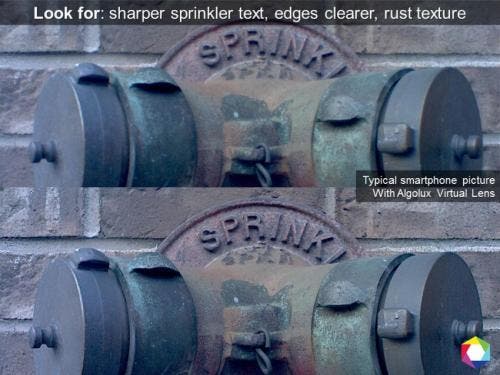
There aren’t that many people who imagined that in only a couple of years we’d see smartphones with 40MGpx cameras. Amazingly as that may sound, manufacturers are nearing a stand-still as far as optics miniaturization is concerned and even so, high end camera phones don’t come near the quality of a dedicated optical hardware. A new software developed by a company called Algolux is set to cover some of the lost ground by correcting optical aberrations and in the process making photos taken by your smartphone or tablet a lot sharper or clearer without any hardware modifications.

Algolux Virtual Lens corrects optical aberrations through software, for sharper photos. Algolux Virtual IS corrects motion blur and shutter shake, which may be experienced in low light conditions. Virtual Lens takes care of image quality while Virtual IS software takes care of image stabilization. All in all, the company has software and computational imaging techniques that correct for blurring, distortion and other aberrations.
“We are currently focusing on smartphones and tablets, a fast-growing market where cameras and computational power are tightly intertwined. As smartphones attain a certain level of parity across vendors, camera quality and device design have become very strong differentiators.” said the team.
The algorithms will be especially useful for low-end phones. It’s enough to see these sample before and after pics to understand what I mean. For the smartphone industry this should be a fantastic addition, one that will allow manufacturers to keep lens design simple, by substituting complex lens systems with smart software. This means cheaper, better and smaller phone cameras.






